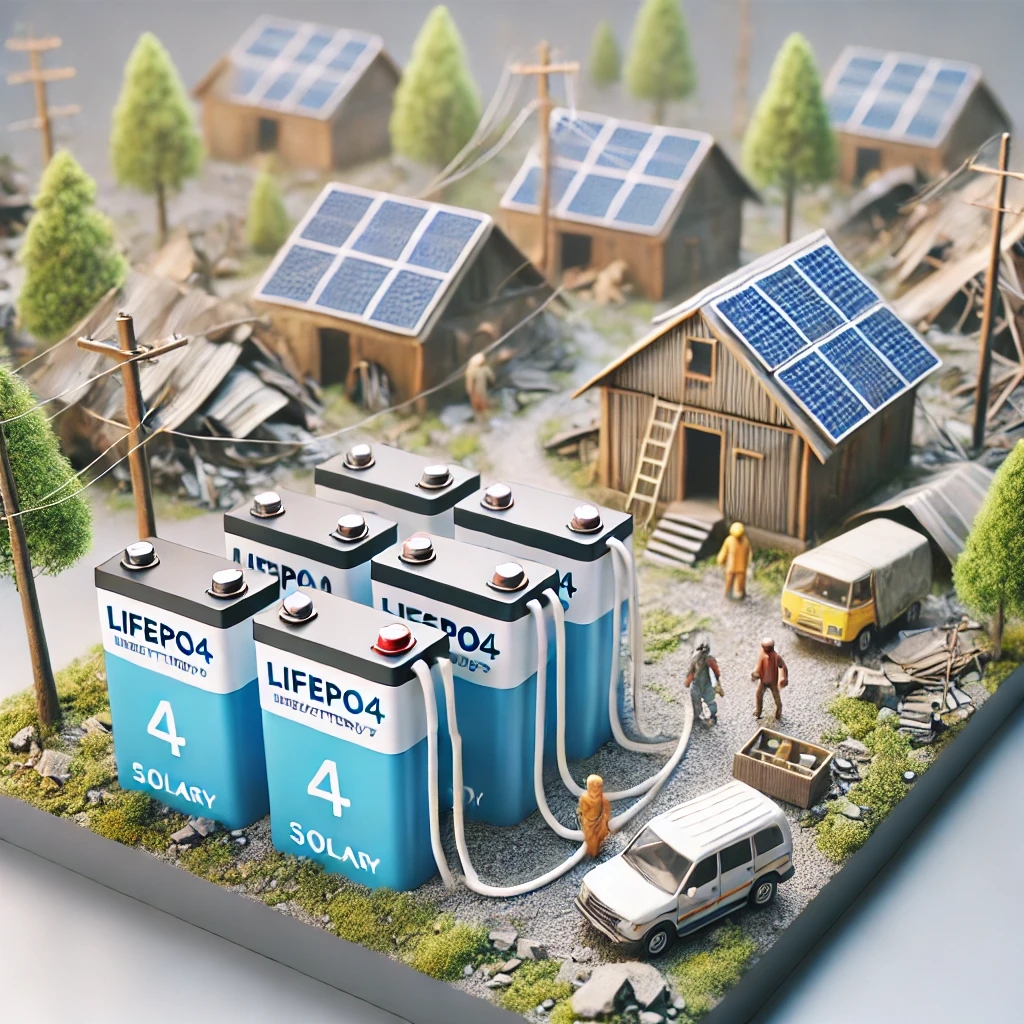LiFePO4 Batteries: Enabling Renewable Energy Solutions in Disaster Recovery
LiFePO4 Batteries: Enabling Renewable Energy Solutions in Disaster Recovery
In the aftermath of a disaster, access to reliable energy is critical for communities to recover and rebuild. LiFePO4 batteries are playing a key role in enabling renewable energy solutions, such as solar power systems, to provide sustainable energy to disaster-affected regions. By storing energy from renewable sources, LiFePO4 batteries ensure that communities have a consistent power supply during the recovery process.
1. Powering Solar Energy Systems for Disaster-Affected Communities
In disaster-prone regions, where the electrical grid may be damaged or destroyed, solar energy systems powered by LiFePO4 batteries offer a viable solution. These systems use solar panels to capture energy from the sun and store it in LiFePO4 batteries, which can then be used to power homes, medical equipment, and essential services.
LiFePO4 batteries are ideal for solar energy storage because they offer a long cycle life, high energy density, and reliable performance in harsh conditions. By using solar power in combination with LiFePO4 batteries, communities in disaster-affected areas can regain access to electricity more quickly and efficiently.
2. Enabling Energy Independence in Remote Areas
In remote areas that are difficult to reach or have limited infrastructure, solar-powered systems with LiFePO4 batteries provide a sustainable and independent energy source. These systems can power off-grid homes, schools, hospitals, and community centers, ensuring that essential services are not disrupted by the loss of the electrical grid.
LiFePO4 batteries ensure that energy is stored efficiently, providing power to these areas even during cloudy days or at night. This energy independence is especially important in areas where traditional power sources may be unavailable or unreliable.
3. Supporting Disaster Relief and Recovery with Renewable Energy
During disaster recovery, access to clean and sustainable energy is crucial for rebuilding efforts. LiFePO4 batteries, paired with solar panels, enable disaster relief teams to provide electricity to affected areas without relying on fossil fuels. These renewable energy systems can power temporary shelters, medical facilities, and mobile units, helping to ensure that recovery operations continue smoothly.
LiFePO4 batteries also support renewable energy infrastructure, which helps reduce the environmental impact of recovery efforts. By using clean energy sources like solar power, disaster recovery teams can minimize their carbon footprint and contribute to a more sustainable future.
4. Providing Reliable Power for Critical Systems
In disaster recovery, critical systems like communication networks, water pumps, and medical devices require a continuous power supply. LiFePO4 batteries ensure that these systems remain operational even during power outages caused by natural disasters.
By integrating LiFePO4 batteries into solar-powered energy systems, recovery teams can ensure that essential services remain functional throughout the disaster recovery process. Whether it’s powering water purification systems or supporting communication devices, these batteries provide a reliable source of energy for critical infrastructure.
5. Eco-Friendly and Cost-Effective Energy Solutions
One of the most significant benefits of using LiFePO4 batteries in disaster recovery is their eco-friendliness. Unlike traditional lead-acid batteries, LiFePO4 batteries contain no toxic materials and have a longer lifespan, making them a more sustainable energy solution.
Additionally, LiFePO4 batteries are cost-effective in the long run due to their durability and low maintenance requirements. As more communities adopt renewable energy solutions, the cost of powering homes and businesses using LiFePO4 batteries continues to decrease, making these systems an affordable option for disaster recovery.
6. Enhancing Long-Term Disaster Resilience with Renewable Energy
The integration of LiFePO4 batteries into renewable energy systems is a key factor in building long-term disaster resilience. By relying on solar power and energy storage, communities can reduce their dependence on external energy sources and create more self-sufficient systems. These systems can be rapidly deployed to provide power during emergencies and can continue to function long after the disaster has passed.
As communities rebuild and recover, renewable energy solutions with LiFePO4 batteries can help ensure that they are better prepared for future disasters, reducing vulnerability and enhancing resilience to changing environmental conditions.
Conclusion
LiFePO4 batteries are revolutionizing disaster recovery by enabling sustainable and renewable energy solutions. From powering solar energy systems to supporting critical infrastructure, these batteries provide reliable, eco-friendly, and cost-effective power for disaster-affected communities. By integrating LiFePO4 batteries into renewable energy systems, disaster relief teams and affected communities can build a more resilient and sustainable future.
For more information on renewable energy solutions for disaster recovery, visit Yabopower, a leading provider of LiFePO4-powered products designed to meet the energy needs of communities during and after a disaster.
READ MORE:
LiFePO4 Batteries: Powering Field Hospitals in Disaster Recovery
LiFePO4 Batteries: Empowering Portable Power Stations in Disaster Situations
LiFePO4 Batteries: Powering Disaster Recovery and Relief Efforts
LiFePO4 Batteries: Enabling Off-Grid Living and Energy Independence
LiFePO4 Batteries: Ideal Applications and Devices for Various Scenarios











